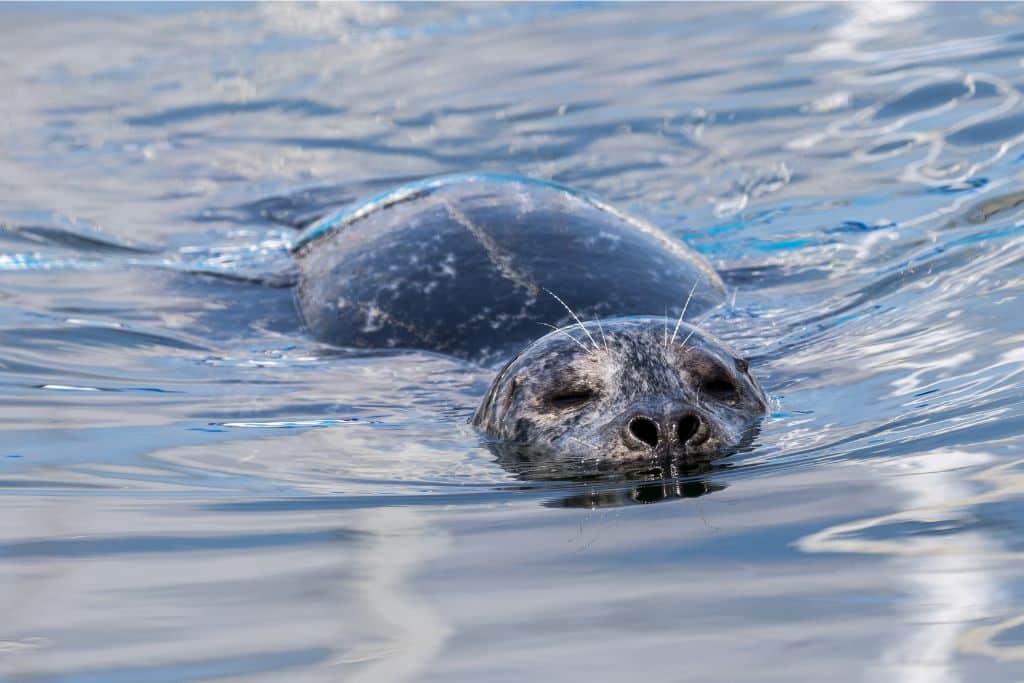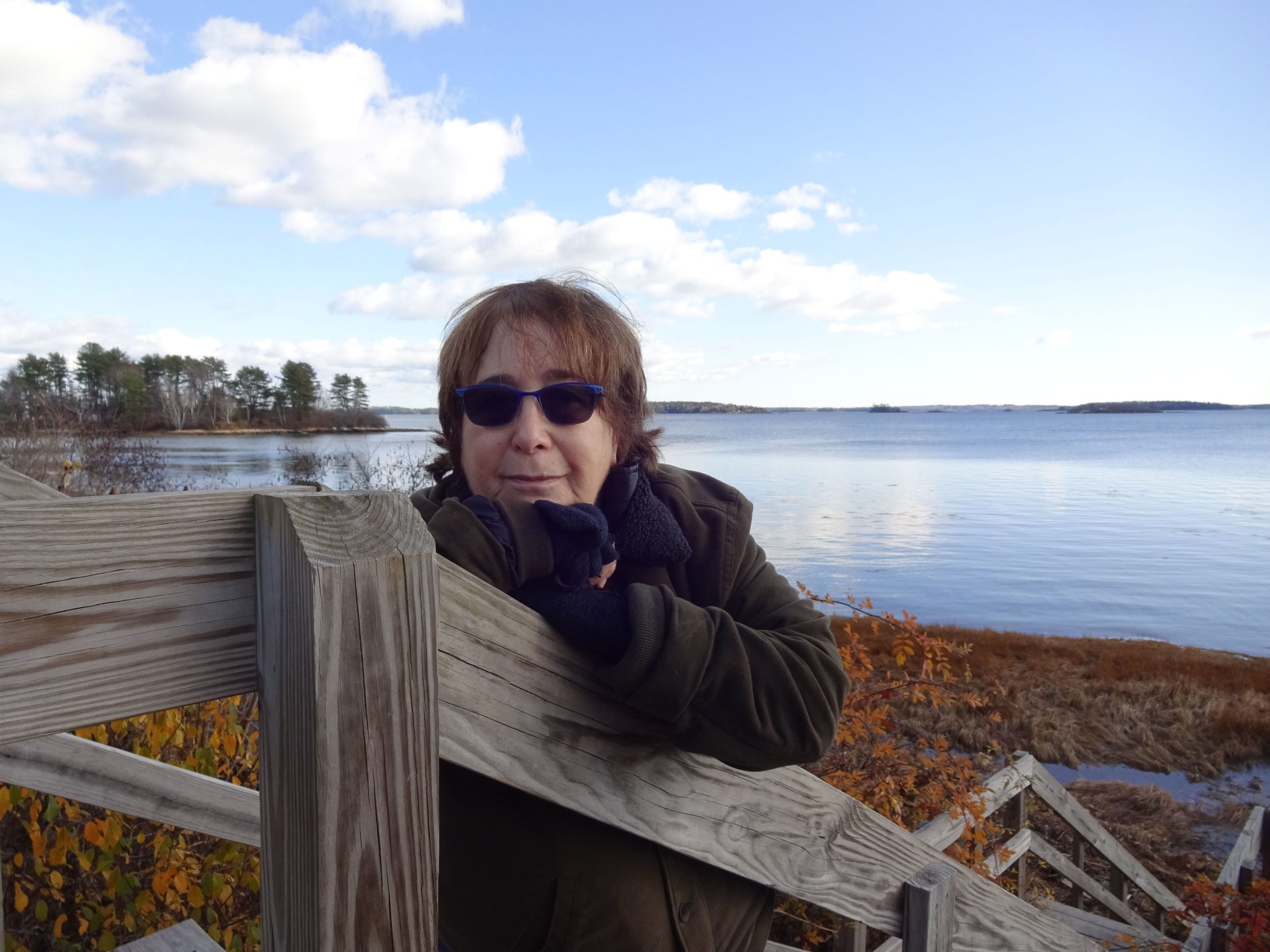A new facial recognition machine learning software that recognises the faces of individual seals with 95% accuracy was developed by researchers at Colgate University in New York. The highly accurate form of identification assists in a new understanding of the social behaviour and movement of harbor seals (Phoca vitulina) and in evaluating environmental and ecological impacts.
—
Photo identification has been used for decades in the research of the distribution, lifestyle, and migration patterns of whales and dolphins. Individual animals are identified by comparing photos to those stored in a database.
The longest and most detailed in the world of such data sets are identification photos taken of baleen whales in the Stellwagen National Marine Sanctuary, an 842-square-mile (2,181-square-metre) body of water located at the mouth of Massachusetts Bay, between Cape Cod and Cape Ann. Identification photos of humpback whales are taken of the underside of the fluke or tail. Individuals are identified by the unique patterns of black and white pigmentation and scars on the fluke. This information is then used to assign individual humpbacks a catalog number. Their identification photographs are retained in the Gulf of Maine Humpback Whale Catalog and the North Atlantic Humpback Whale Catalog, respectively archived by the Provincetown Center for Coastal Studies and the College of the Atlantic in Maine.
Photo identification has also been used to recognise individual orca whales in the Salish Sea. This technique was pioneered in the 1970s by Canadian researcher Dr. Michael Bigg to study the Southern Resident orca whale population found along the Canadian province of British Columbia and Washington state in the US, Individuals are recognised by distinctive nicks, scars, and shapes on their prominent dorsal fins. The dorsal fin characteristics are used in combination with the also distinctive whitish-grey pigmentation behind the fin, an area often referred to as the saddle patch. Bigg proved the reliability of this photo identification technique after he radio-tagged an individual with two nicks carved in the rear edge of the dorsal fin. The nicks remained unchanged throughout the animal’s lifetime.
The life history of harbor seals is less understood because, unlike humpback and orca whales, a highly reliable photo identification methodology has been lacking. Photos of seal pelage are not trustworthy for a number of reasons, including changes that occur as seals mature and during periods of molting.
While other forms of monitoring techniques have been used, they are typically costly, time-consuming, and invasive. Accurate data on harbor seal populations is useful because these marine mammals serve as indicators of ecosystem health and knowing more about their behaviour assists wildlife managers to make management decisions.
Facial Recognition Software
Facial recognition technology is a highly accurate tool in the surveillance and authentication of human faces. It also has been used with much success in primate research.
“Seals are one step further away from the human face, so I wasn’t sure if this would work,” Krista Ingram, professor of biology at Colgate University, said. “But I thought it was worth a try.”
In the Colgate study, dozens of harbor seals were photographed in Casco Bay, Maine. A database was created from the photos and machine learning software was created. The software nicknamed SealNet is designed to identify a seal’s face using facial features such as eyes and nose shape. More than 1,700 photos of more than 400 individual seals were used to test the SealNet software, which was eventually proved to be 95% accurate.

Photo by Pam Ferris-Olson
“Understanding their dispersal, understanding their patterns really helps inform any conservation efforts for the coast,” Ingram said. “For mobile marine mammals that move around a lot and are hard to photograph in the water, we need to be able to identify individuals.”
Harbor seals, once subject to bounties, now appear fairly abundant in Maine. Still, many questions remain about Maine’s wild populations of harbor seals and there is a need for additional ecological and behavioral information. SealNet’s application is likely to extend beyond harbor seals and could be extremely important for the study of more endangered populations such as the Mediterranean monk seal, the world’s most endangered seal species.
While SealNet has been heralded as a major breakthrough for work with harbor seals, less sophisticated photo identification methodology has been used by other groups working in the field for many years.
A group known as Harbor Seals of Pacific Grove (HSPG) in Monterey County, California, has been photographing harbor seals for over a decade. The group attributes their work to Bay Net, a group working in the Monterey Bay National Marine Sanctuary.
“We do it differently than the facial recognition software. We look at the spots and markings on the whole seal so that no matter which direction the seal is facing or what body part is showing, we have a good chance of identifying that seal,” said a spokesperson for Harbor Seals of Pacific Grove.
You might also like: 11 of the Most Endangered Species in the Ocean in 2022


















